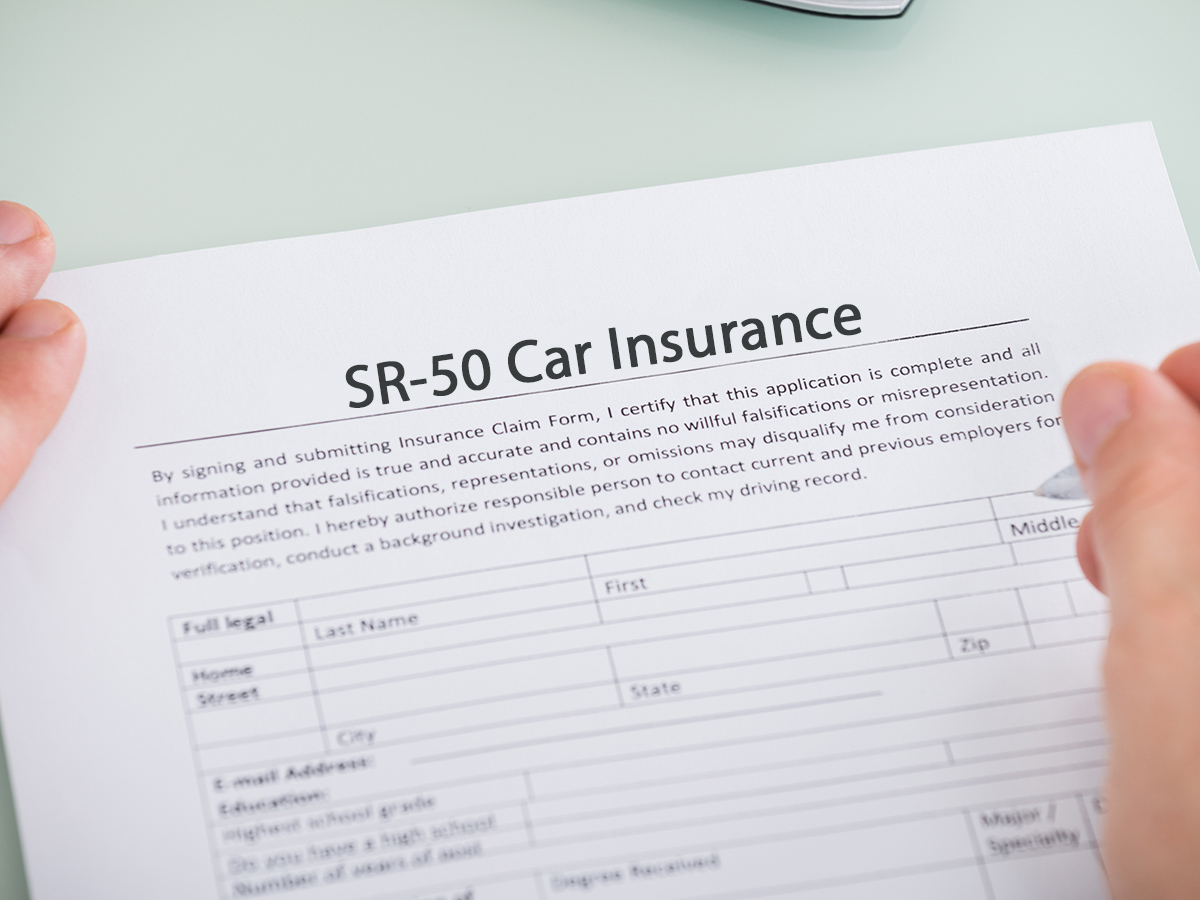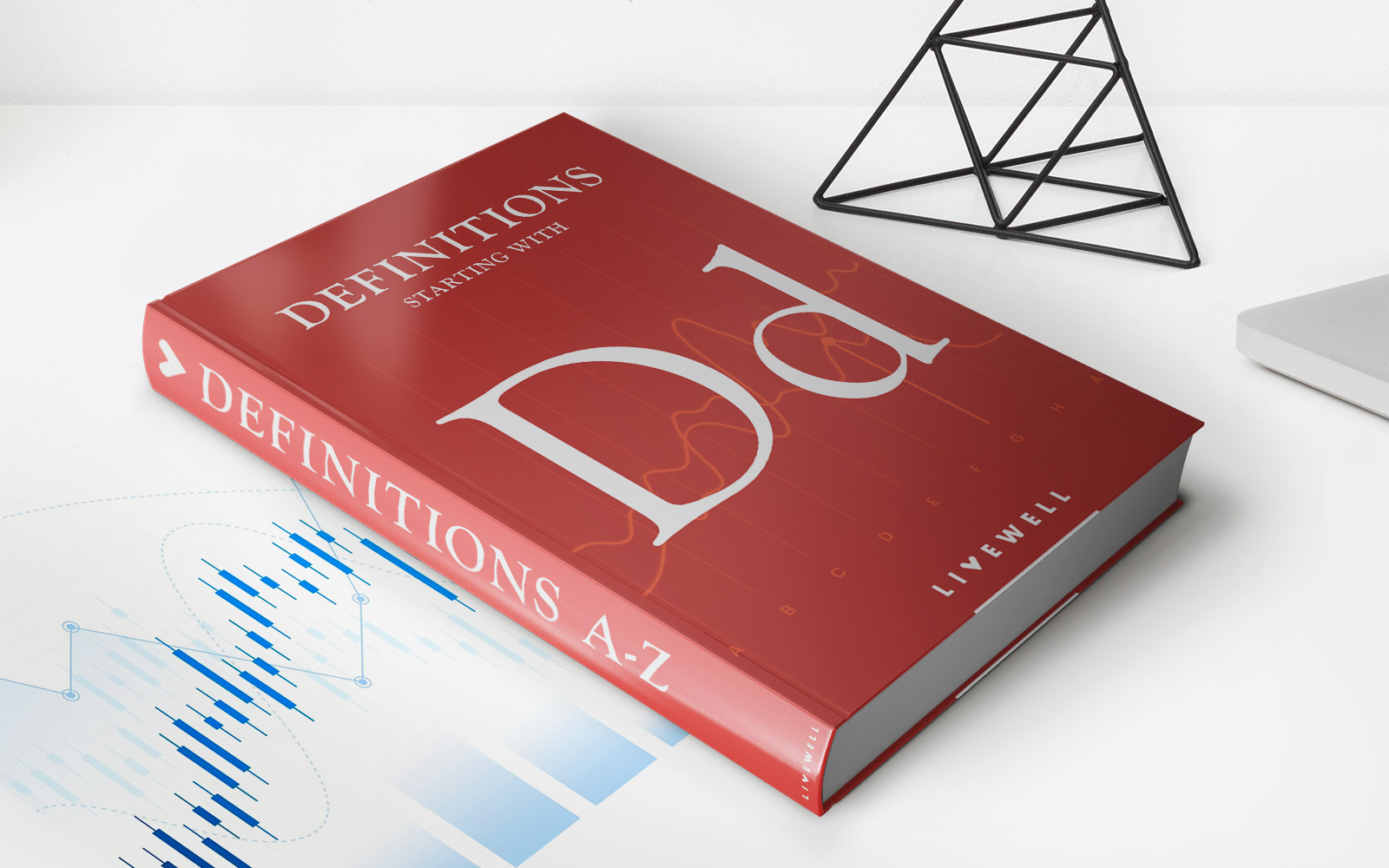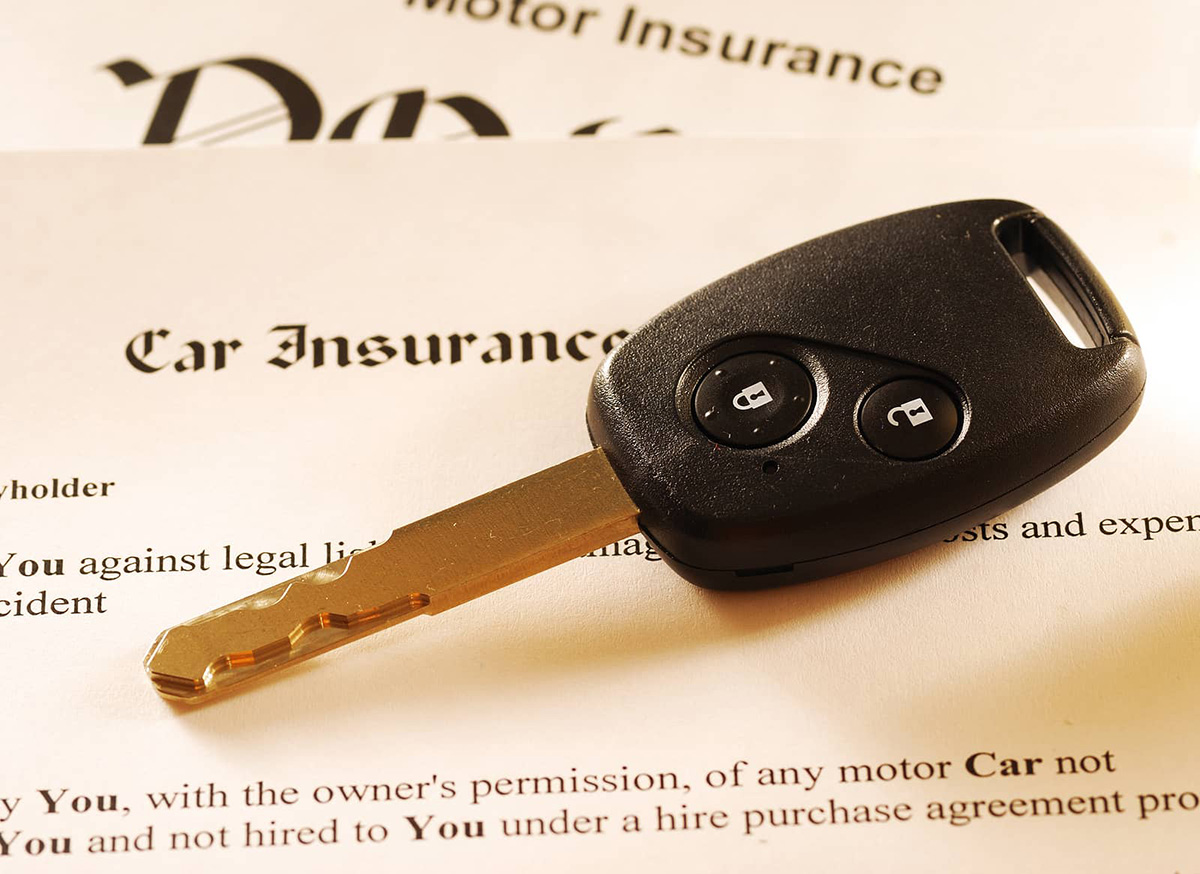

Finance
What Is SR-50 Insurance
Published: November 22, 2023
Understanding SR-50 insurance is essential for managing your finances. Learn about this specialized insurance coverage and how it impacts your financial responsibilities.
(Many of the links in this article redirect to a specific reviewed product. Your purchase of these products through affiliate links helps to generate commission for LiveWell, at no extra cost. Learn more)
Table of Contents
Introduction
Welcome to our comprehensive guide on SR-50 insurance. If you’ve heard this term before but aren’t quite sure what it means, don’t worry – we’re here to break it down for you. SR-50 insurance is a unique form of auto insurance coverage that comes with specific requirements and implications.
SR-50 insurance is often required for individuals who have had their driver’s license suspended or revoked due to certain driving infractions, such as driving under the influence (DUI) or reckless driving. It serves as proof of financial responsibility and enables these individuals to regain their driving privileges.
In this article, we will explain what SR-50 insurance is, its purpose, who needs it, and the process of obtaining it. We will also discuss the requirements, costs, benefits, and consequences associated with SR-50 insurance. So, whether you are in need of SR-50 insurance or simply want to learn more about it, you’ve come to the right place.
It’s important to note that SR-50 insurance requirements and regulations may vary from state to state. In this guide, we will provide a general overview of SR-50 insurance, but it’s always best to consult with a knowledgeable insurance agent or your local Department of Motor Vehicles (DMV) for specific information related to your state.
Now, let’s dive into the details of SR-50 insurance and uncover everything you need to know about this specialized type of auto insurance coverage.
Definition of SR-50 Insurance
SR-50 insurance, also known as a Certificate of Financial Responsibility (CFR), is a type of auto insurance coverage that is required by certain individuals who have had their driver’s license suspended or revoked. It serves as proof that the individual has the necessary liability insurance coverage to meet their financial responsibilities in the event of an accident.
When a driver is involved in serious traffic offenses, such as DUI, reckless driving, or repeated traffic violations, their driving privileges may be suspended or revoked by the state’s Department of Motor Vehicles (DMV) or equivalent authority. In order to reinstate their license, these individuals are often required to obtain SR-50 insurance.
SR-50 insurance is typically a high-risk insurance policy and may come with stricter regulations and higher premiums compared to standard auto insurance policies. The primary purpose of SR-50 insurance is to protect other drivers and individuals on the road by ensuring that the high-risk driver has adequate liability coverage to compensate for any damages or injuries caused in an accident.
The specific requirements and regulations surrounding SR-50 insurance vary from state to state. In some states, the SR-50 is an actual certificate that must be filed with the DMV, while in others, it may be indicated directly on the driver’s insurance policy or through an electronic filing system.
It’s important to understand that SR-50 insurance is not a separate type of insurance coverage, but rather a designation attached to a person’s existing auto insurance policy. The SR-50 filing serves as proof that the individual meets the minimum insurance requirements set by the state.
Now that we have defined SR-50 insurance, let’s explore its purpose and why it is required.
Purpose of SR-50 Insurance
The purpose of SR-50 insurance is twofold: to ensure that high-risk drivers have sufficient liability coverage and to provide proof of financial responsibility to the state’s authorities. By mandating SR-50 insurance, the goal is to protect other drivers and individuals on the road from potential financial hardships resulting from accidents caused by high-risk drivers.
When a driver has their license suspended or revoked due to serious traffic offenses, such as DUI or reckless driving, they are considered high-risk drivers. This means they are more likely to be involved in accidents and cause damages or injuries. SR-50 insurance helps mitigate the financial risk associated with these drivers by requiring them to maintain adequate liability insurance coverage.
SR-50 insurance serves as proof to the state’s Department of Motor Vehicles (DMV) or equivalent authority that the high-risk driver has obtained the necessary insurance coverage. It establishes their financial responsibility and demonstrates their commitment to being a responsible driver on the road.
By requiring high-risk drivers to obtain SR-50 insurance, the state aims to protect other drivers, pedestrians, and property owners from potential financial hardships caused by accidents. In the event of an accident, the liability coverage provided by SR-50 insurance helps ensure that the high-risk driver can fulfill their financial obligations and compensate the affected parties for damages, medical expenses, and other losses.
Moreover, SR-50 insurance acts as a deterrent for high-risk drivers, as they are aware that they must maintain continuous coverage and adhere to the rules of the road. The higher premiums associated with SR-50 insurance incentivize drivers to maintain safe driving habits and avoid future violations or infractions.
Ultimately, the purpose of SR-50 insurance is to protect the interests of all road users by requiring high-risk drivers to have sufficient insurance coverage and to demonstrate their financial responsibility. By implementing this requirement, states aim to ensure that drivers who have committed serious traffic offenses take steps to improve their driving behavior and mitigate the risk they pose on the roads.
Now that we understand the purpose of SR-50 insurance, let’s delve into who needs this specialized type of insurance coverage.
Who Needs SR-50 Insurance
SR-50 insurance is typically required for individuals who have had their driver’s license suspended or revoked due to serious traffic offenses or repeated violations. The specific circumstances that warrant the need for SR-50 insurance vary from state to state, but there are some common scenarios where individuals may be required to obtain this specialized type of insurance coverage.
One of the most common reasons individuals need SR-50 insurance is if they have been convicted of driving under the influence (DUI) or driving while intoxicated (DWI). These offenses are considered severe and pose significant risks to both the driver and other individuals on the road. As a result, states often require drivers with DUI or DWI convictions to obtain SR-50 insurance in order to reinstate their driving privileges.
In addition to DUI or DWI offenses, other serious traffic violations that can lead to the need for SR-50 insurance include reckless driving, excessive speeding, at-fault accidents resulting in injury or death, driving without insurance, and driving with a suspended or revoked license.
It’s important to note that every state has its own criteria and regulations regarding SR-50 insurance. Some states may have alternative programs or requirements for high-risk drivers that differ from the SR-50 designation. Therefore, individuals should consult with their local Department of Motor Vehicles (DMV) or an experienced insurance agent to determine if SR-50 insurance is specifically required in their state.
If you have received a notice from the DMV or the court requiring you to obtain SR-50 insurance, it is essential to comply with the mandate to avoid further legal consequences. Failure to obtain SR-50 insurance or maintain continuous coverage can result in extended license suspensions, increased fines, and even imprisonment, depending on the severity of the offense and the jurisdiction.
Now that we know who needs SR-50 insurance, let’s explore the process of obtaining this specialized insurance coverage.
Process of Obtaining SR-50 Insurance
The process of obtaining SR-50 insurance may vary depending on the state’s requirements and the insurance provider you choose. Here is a general overview of the steps involved in obtaining SR-50 insurance:
- Step 1: Determine the SR-50 Insurance Requirement: Check with your local Department of Motor Vehicles (DMV) or equivalent authority to clarify the specific SR-50 insurance requirements in your state. Understand the coverage limits and any additional documentation that may be required.
- Step 2: Contact Insurance Providers: Reach out to insurance providers who offer SR-50 insurance. You can research and compare different providers to find the one that offers the most suitable coverage and competitive rates for your needs.
- Step 3: Provide Necessary Information: When contacting an insurance provider, be prepared to provide relevant information, such as your driver’s license number, details of your driving violations, and any existing insurance policies you may have.
- Step 4: Obtain Insurance Quotes: Request insurance quotes from different providers to compare premiums, coverage options, and any additional fees or requirements specific to SR-50 insurance.
- Step 5: Select an Insurance Policy: Once you’ve reviewed the quotes and considered the coverage options, choose an insurance policy that meets the SR-50 insurance requirements and fits within your budget.
- Step 6: Submit Required Documents: Provide the necessary documents to the insurance provider, which may include your SR-50 certificate or filing, proof of insurance, and any other documents required by the state or insurance company.
- Step 7: Pay Premiums and Fees: Pay the premium for your SR-50 insurance policy along with any applicable fees or down payments required by the insurance provider.
- Step 8: Maintain Continuous Coverage: It is crucial to maintain continuous SR-50 insurance coverage without any lapses. Failure to do so can result in further penalties and extend the duration of your SR-50 insurance requirement.
- Step 9: Provide Proof of Insurance to the DMV: Once you have obtained your SR-50 insurance policy, provide proof of insurance to the DMV or equivalent authority as required by your state. This may involve submitting the SR-50 certificate, filing the information electronically, or including the SR-50 designation on your insurance policy.
Remember, the specific procedures and requirements may vary from state to state, so it’s important to consult your local DMV or an experienced insurance agent for accurate and up-to-date information.
Now that we’ve covered the process of obtaining SR-50 insurance, let’s explore the specific requirements associated with SR-50 insurance.
Requirements for SR-50 Insurance
The requirements for SR-50 insurance can vary depending on the state in which you reside. While specific requirements may differ, there are some common elements that are typically associated with SR-50 insurance. Here are the key requirements to consider:
- Minimum Liability Coverage: Most states require high-risk drivers to carry a minimum amount of liability coverage. This covers bodily injury and property damage that may result from an accident caused by the insured individual. The minimum liability limits may vary, so it’s important to understand the specific requirements of your state.
- SR-50 Certificate or Filing: In some states, you may be required to obtain an SR-50 certificate or file an SR-50 form with the Department of Motor Vehicles (DMV) or equivalent authority. This is a document that serves as proof of your SR-50 insurance coverage. The certificate must be obtained from your insurance provider and submitted to the appropriate agency.
- Duration of Coverage: The requirement for SR-50 insurance typically continues for a specific period of time determined by the state. The duration may range from a few months to several years, depending on the severity of the offense and any repeat violations. It’s important to know the exact duration of your SR-50 insurance requirement in order to maintain continuous coverage.
- No Lapse in Coverage: It is crucial to maintain continuous SR-50 insurance coverage throughout the mandated period. Any lapse or cancellation of coverage can result in penalties, extending the duration of the SR-50 requirement and potentially leading to additional consequences such as license suspension or increased fines.
- Reporting Changes and Updates: High-risk drivers with SR-50 insurance are often required to report any changes or updates to their insurance policy to the DMV or equivalent authority. This may include changes to the policyholder’s address, contact information, or policy status. Failure to report these changes may result in further penalties.
- Compliance with State Laws and Regulations: High-risk drivers with SR-50 insurance must comply with all traffic laws and regulations in their state. Failure to do so may lead to additional penalties, fines, or even the revocation of driving privileges.
It’s important to remember that the specific requirements for SR-50 insurance can vary significantly from one state to another. Therefore, it is advisable to consult with your local DMV or an experienced insurance agent to ensure that you meet the specific requirements of your state.
Now that we understand the requirements for SR-50 insurance, let’s delve into the cost aspect of this specialized insurance coverage.
Cost of SR-50 Insurance
The cost of SR-50 insurance can vary based on several factors, including the state you reside in, the severity of your driving violations, your driving record, and the insurance provider you choose. SR-50 insurance is generally more expensive than standard auto insurance due to the higher risk associated with insuring high-risk drivers.
One of the main factors influencing the cost of SR-50 insurance is the nature of the driving violations that led to the requirement for this specialized coverage. Offenses like DUI, reckless driving, or multiple traffic violations often result in significantly higher insurance premiums as they indicate a higher likelihood of future accidents and claims.
The state you live in also plays a role in determining the cost of SR-50 insurance. Each state has its own regulations and requirements, and insurance companies factor in these variations when assessing premiums. Some states have more lenient SR-50 requirements, which could result in lower premiums, while others may have stricter guidelines, leading to higher costs.
Your driving record, specifically any additional traffic violations or accidents beyond the initial offense, may further impact the cost of SR-50 insurance. Insurance companies assess your overall level of risk, and a poor driving record can result in higher premiums.
Additionally, insurance providers themselves may have different pricing structures and policies regarding SR-50 coverage. It’s important to shop around and compare quotes from multiple insurance companies to ensure you are getting the most competitive rate.
When obtaining SR-50 insurance quotes, it’s essential to consider the coverage limits and any additional fees or charges specific to SR-50 insurance. While the premiums for SR-50 insurance may be higher, it’s important to maintain adequate coverage to protect yourself and others in the event of an accident.
It’s worth noting that the cost of SR-50 insurance can decrease over time as you maintain a clean driving record and demonstrate responsible behavior behind the wheel. Following traffic laws, maintaining continuous coverage, and avoiding further violations can help lower your insurance premiums over time.
Now that we’ve discussed the cost of SR-50 insurance, let’s move on to exploring the benefits associated with this specialized type of coverage.
Benefits of SR-50 Insurance
SR-50 insurance, while often associated with higher costs and stricter requirements, provides several important benefits for high-risk drivers. These benefits include:
- Legal Compliance: SR-50 insurance enables high-risk drivers to fulfill their legal obligations and comply with the requirements set forth by their state’s Department of Motor Vehicles (DMV) or equivalent authority. By obtaining SR-50 insurance, drivers can regain their driving privileges and avoid further legal consequences.
- Financial Protection: SR-50 insurance provides financial protection for both high-risk drivers and other individuals on the road. In the event of an accident caused by the insured driver, SR-50 insurance covers the costs associated with property damage, medical expenses, legal fees, and other liabilities up to the policy limits. This helps protect the insured individual from potential financial hardships and ensures that affected parties are compensated for their losses.
- Continued Mobility: Having SR-50 insurance allows high-risk drivers to continue driving legally after a license suspension or revocation. Without this insurance, drivers may face prolonged license suspensions or other penalties, which can hinder their ability to commute to work, attend school, or handle personal responsibilities.
- Opportunity for Improvement: SR-50 insurance serves as a second chance for high-risk drivers to demonstrate their commitment to responsible driving. By maintaining continuous coverage, adhering to traffic laws, and avoiding future violations, drivers can work towards improving their driving record and eventually transition back to standard auto insurance coverage.
- Peace of Mind: Being insured with SR-50 coverage provides peace of mind for high-risk drivers. They can drive with confidence, knowing that they have the necessary insurance protection in place to fulfill their financial responsibilities in case of an accident.
While SR-50 insurance may come with higher premiums and stricter regulations, it offers essential benefits that go beyond just fulfilling legal requirements. It can provide financial security, mobility, and an opportunity for drivers to rebuild their driving reputation.
It’s important to keep in mind that the specific benefits associated with SR-50 insurance may vary depending on the insurance provider, state regulations, and individual circumstances. Consulting with an experienced insurance agent can help you understand the specific benefits available in your situation.
Now that we’ve explored the benefits of SR-50 insurance, let’s discuss the potential consequences of not having this specialized insurance coverage.
Consequences of Not Having SR-50 Insurance
Not having SR-50 insurance when required can lead to significant consequences, both legally and financially. It is crucial to understand the potential ramifications of not maintaining this specialized insurance coverage. Here are some possible consequences:
- Extended License Suspension: If you fail to obtain or maintain SR-50 insurance as required by your state, your driver’s license suspension or revocation may be extended. This means you will be unable to legally operate a motor vehicle for a longer period of time.
- Inability to Reinstate Your License: In many jurisdictions, having SR-50 insurance is a prerequisite for reinstating a suspended or revoked driver’s license. Not having this insurance coverage may prevent you from regaining your driving privileges, potentially prolonging the period in which you are unable to drive legally.
- Increased Fines or Penalties: Failure to comply with the SR-50 insurance requirement may result in increased fines or penalties imposed by the court or the Department of Motor Vehicles (DMV). These additional penalties can further add to the financial burden associated with the initial violation.
- Legal Consequences: Not having SR-50 insurance when required can have legal ramifications. It may result in further legal charges, additional fines, and even potential imprisonment, depending on the severity of the offense and the legal framework of your jurisdiction.
- Limited Insurance Coverage: Without SR-50 insurance, you will not have the necessary liability coverage to protect yourself and others in the event of an accident. This means you will be personally responsible for any damages, injuries, or other liabilities resulting from an accident, potentially leading to significant financial hardships.
- Difficulty Obtaining Future Insurance: Not maintaining SR-50 insurance or having a lapse in coverage can make it challenging to obtain affordable auto insurance in the future. Insurance companies may view you as a high-risk driver, increasing your premiums or potentially even denying coverage altogether.
It’s important to note that the specific consequences of not having SR-50 insurance can vary depending on your state’s laws and regulations, as well as the severity of the offense that led to the requirement for this specialized coverage. It is always wise to consult with a qualified insurance agent or legal professional to understand the precise consequences you may face.
Now that we’ve explored the potential consequences, let’s discuss the duration of time that SR-50 insurance is typically required.
How Long SR-50 Insurance is Required
The duration for which SR-50 insurance is required varies depending on the laws and regulations of your state, as well as the specific circumstances of your violation. Generally, the duration of SR-50 insurance is determined by the severity of the offense and whether it was a first-time violation or a repeat offense.
In some cases, the requirement for SR-50 insurance may be a fixed term, such as 3 years or 5 years. This means that high-risk drivers must maintain SR-50 insurance coverage for the specified period before they can transition back to a standard auto insurance policy. However, it’s important to note that some offenses, particularly more serious ones like DUI or multiple traffic violations, may result in longer SR-50 insurance requirements.
It’s crucial to abide by the designated timeline for SR-50 insurance and maintain continuous coverage throughout the mandated period. Any lapses or cancellations in coverage could result in extended requirements, increased fines, and potential legal consequences.
Once the mandatory duration of SR-50 insurance is completed, it is important to confirm with your state’s regulations and the Department of Motor Vehicles (DMV) regarding the process of transitioning back to a standard auto insurance policy. This typically involves notifying your insurance provider and providing the necessary documentation to demonstrate that the SR-50 insurance requirement has been fulfilled.
It’s important to keep in mind that the specific duration of SR-50 insurance can vary from state to state and is dependent on the laws and regulations in place at the time of the violation. Therefore, it is recommended to consult with your local DMV or an experienced insurance agent to determine the exact duration of SR-50 insurance required in your specific situation.
Now that we’ve discussed the duration of SR-50 insurance requirements, let’s conclude our comprehensive guide on this specialized insurance coverage.
Conclusion
SR-50 insurance, also known as a Certificate of Financial Responsibility (CFR), is a specialized form of auto insurance coverage required for high-risk drivers who have had their licenses suspended or revoked. While the specific requirements and regulations for SR-50 insurance vary from state to state, the underlying purpose remains the same: to ensure that high-risk drivers maintain adequate liability coverage and demonstrate financial responsibility.
In this comprehensive guide, we have covered the definition of SR-50 insurance, its purpose, and who needs it. We have explored the process of obtaining SR-50 insurance, including contacting insurance providers, providing necessary information, and obtaining the required SR-50 certificate or filing. Additionally, we have discussed the requirements associated with SR-50 insurance, such as minimum liability coverage, duration of coverage, and the need for continuous insurance without lapses.
We have also explored the cost implications of SR-50 insurance, which can be higher compared to standard auto insurance due to the increased risk associated with high-risk drivers. However, SR-50 insurance offers benefits such as legal compliance, financial protection, continued mobility, and the opportunity for drivers to improve their driving habits.
It’s important to understand the consequences of not having SR-50 insurance, which can include extended license suspension, increased fines or penalties, legal repercussions, limited insurance coverage, and difficulties obtaining insurance in the future.
Finally, we discussed the duration for which SR-50 insurance is typically required, which varies depending on the severity of the offense and the laws of each state. It is crucial to comply with the designated timeline and maintain continuous coverage throughout the mandated period.
Remember, the information provided in this guide is a general overview of SR-50 insurance. It is essential to consult with your local Department of Motor Vehicles (DMV) or an experienced insurance agent to understand the specific requirements and regulations in your state.
By obtaining and maintaining SR-50 insurance, you can fulfill your legal obligations, protect yourself and others on the road, and work towards improving your driving record. With proper understanding and compliance, you can successfully navigate the SR-50 insurance process and regain your driving privileges.
We hope that this comprehensive guide has provided you with the necessary information to better comprehend SR-50 insurance and its significance. Remember to always stay informed, drive responsibly, and prioritize the safety of yourself and others on the road.














